12 Everyday Foods That Naturally Mimic Ozempic's Effects, According to a Nutritionist

Looking to manage your weight but can't get your hands on Ozempic or Wegovy? You're not alone. With waitlists growing and prices soaring, many are searching for alternatives. Celebrity Chef Zigga, a Certified Nutritionist, recently shared some game-changing information on FOX 29 – many everyday foods naturally contain or stimulate GLP-1, the same hormone that makes these medications effective. "Right now only Wegovy is approved for chronic weight management. Ozempic is supposed to be used by type 2 diabetics only," explains Chef Zigga, who then revealed that "GLP-1 is in a lot of food." Read on to discover which kitchen staples might help you feel fuller longer without needing a prescription.
RELATED: 15 Things to Know Before Requesting Ozempic for Weight Loss
Omega-3 Rich Salmon
Salmon stands out as a top natural source of GLP-1-stimulating nutrients. "GLP-1 is basically food that have a lot of fatty acids, so omega-3s," Chef Zigga explains while presenting a salmon dish during the segment. This fatty fish provides high-quality protein along with those essential omega-3s that can help regulate appetite and slow digestion. Chef Zigga specifically highlights salmon when discussing foods with "more fats, more omega-3s" that support the body's natural GLP-1 production.
Creamy Avocados
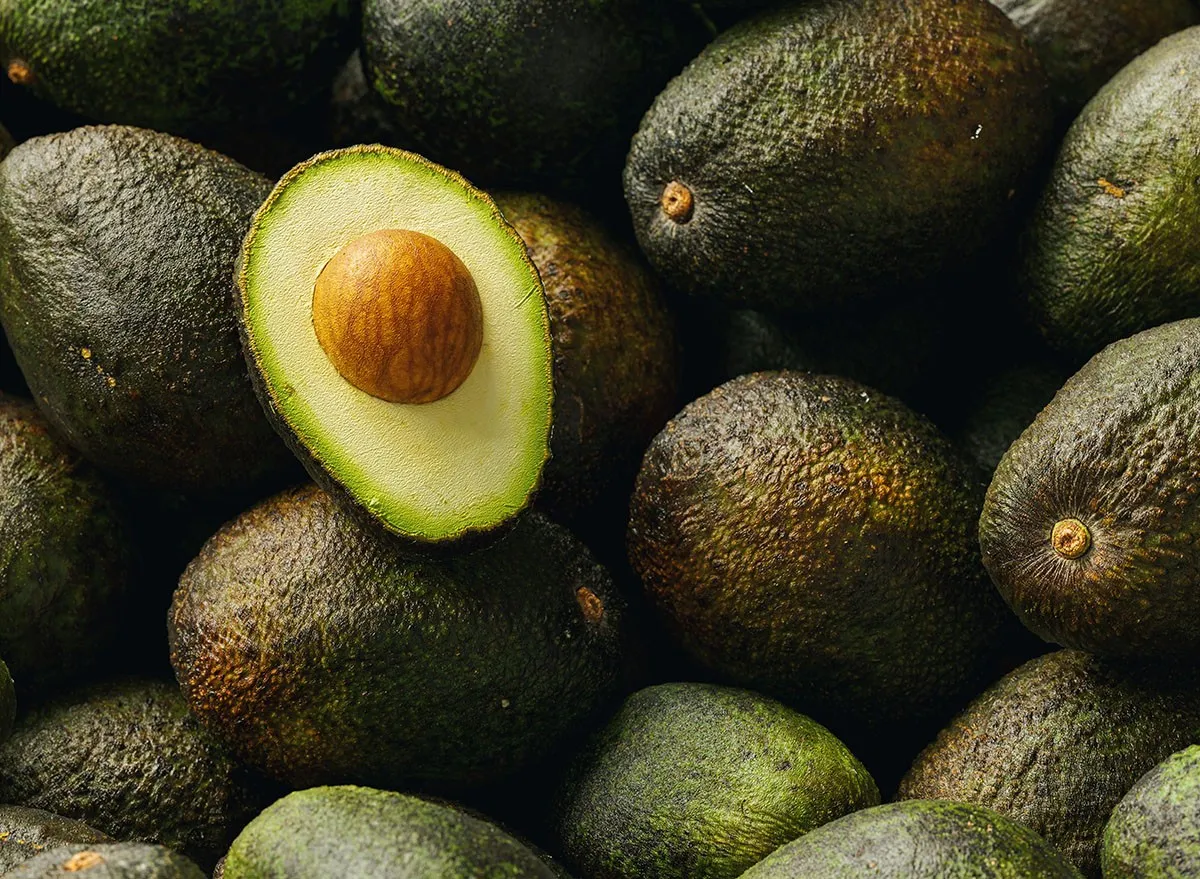
Avocados earn their place on this list thanks to their healthy fat content that supports natural GLP-1 production. Chef Zigga specifically mentions avocados when discussing foods rich in omega-3 fatty acids, noting, "If you're looking for something with more fats, more omega-3s, then you have salmon, then you have stuff like avocado." These versatile fruits provide the satisfying fats that help trigger hormones that regulate appetite and digestion, similar to how Ozempic works in the body.
Surprising Brussels Sprouts
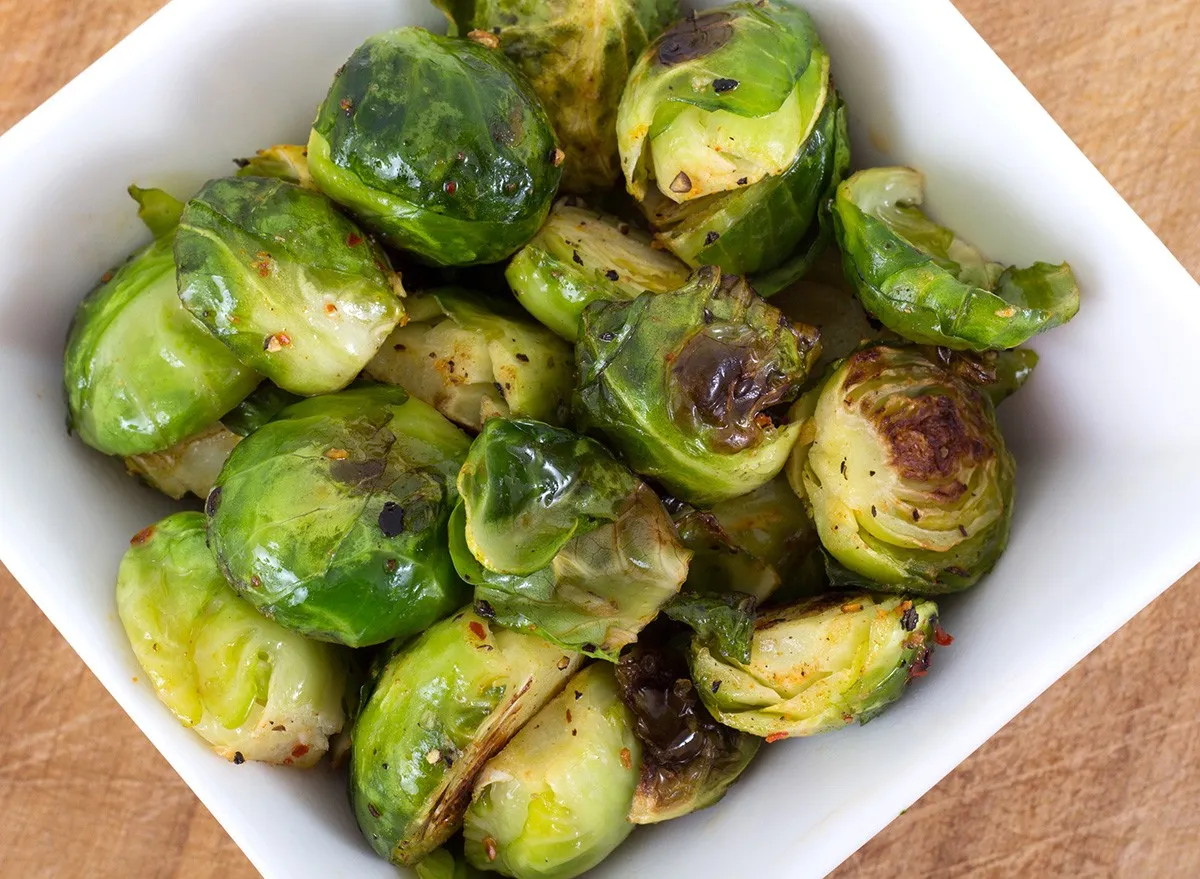
Don't underestimate these little green powerhouses! "Brussels sprouts actually have more omega-3s than avocado does," Chef Zigga reveals during the segment, highlighting their impressive nutritional profile. These cruciferous vegetables not only contain unexpected levels of omega-3s but are also packed with fiber that helps slow digestion and prolong feelings of fullness. Chef Zigga specifically included brussels sprouts under the salmon in their demonstration, creating a GLP-1 boosting power plate.
Fiber-Rich Asparagus
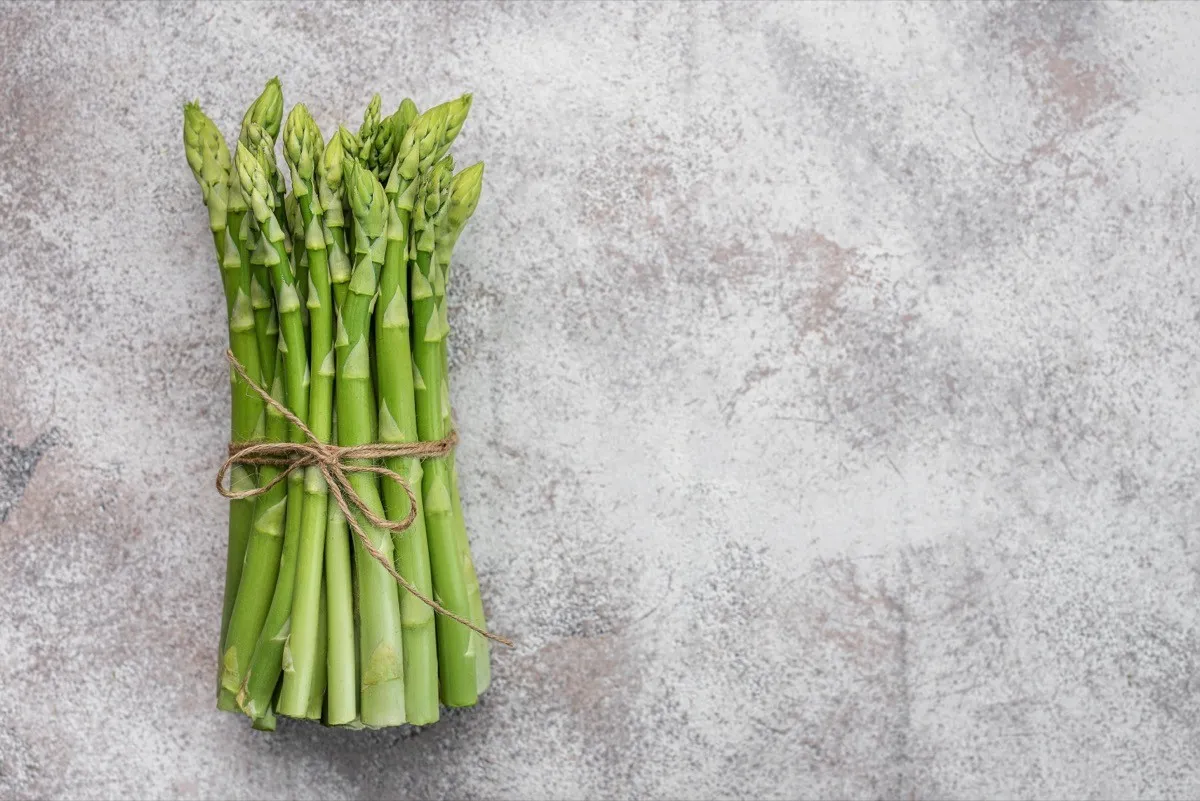
Asparagus makes the list thanks to its impressive fermented fiber content that supports digestion and satiety. Chef Zigga specifically mentions that "fermented fibers, that's what helps you stay fuller longer," highlighting vegetables like asparagus in this category. This spring vegetable works in your digestive system much like GLP-1 medications do – slowing food movement and helping you feel satisfied longer after meals.
RELATED: 20 Possible Ozempic Side Effects
Lean Bison
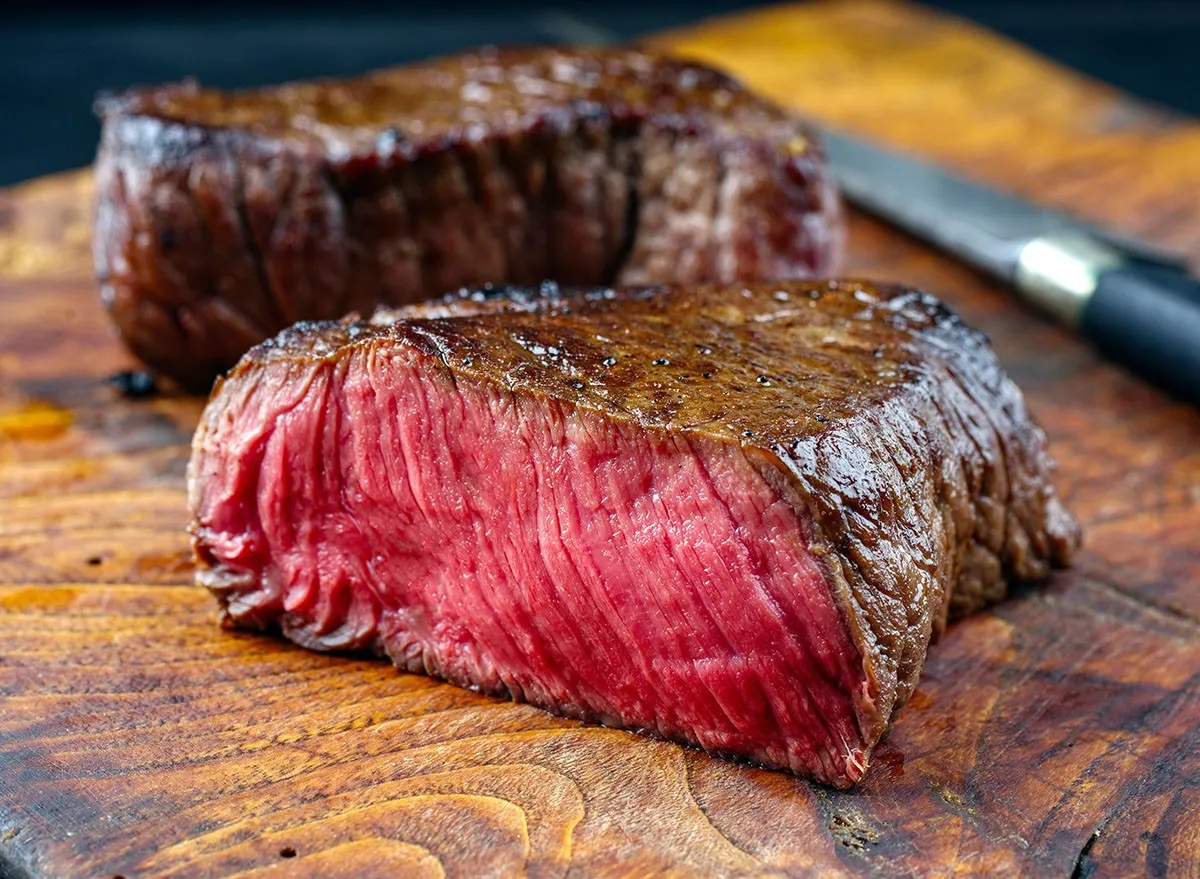
Bison offers a red meat alternative that supports natural GLP-1 production without excess fat. "Bison is a lean meat," Chef Zigga explains while presenting bison meatballs. During the segment, they specifically recommend that "if you're trying to lose weight, you want to stay with 90-10 ground beef, you want to stay with lean meats like bison." This protein-packed option helps trigger satiety hormones naturally while providing satisfying flavor with less fat than traditional beef.
White Fish Varieties
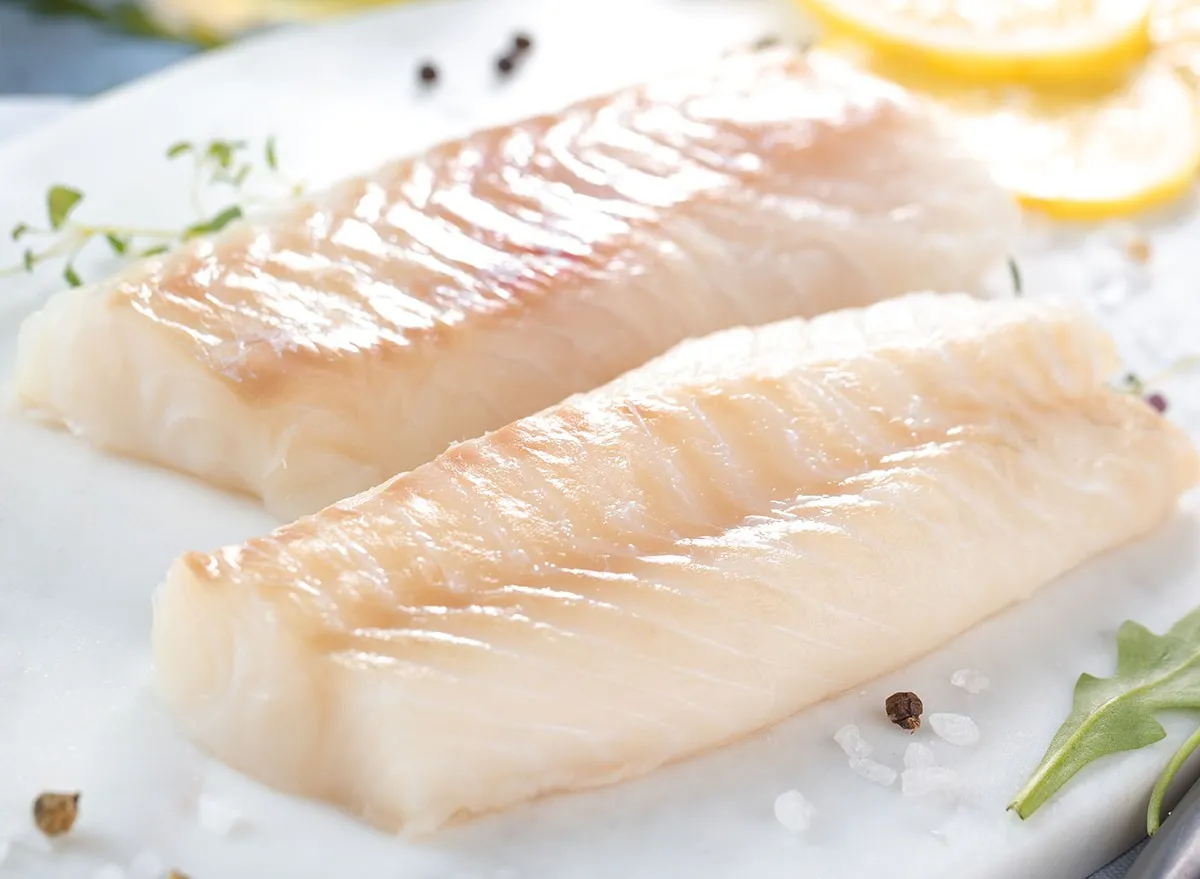
White fish varieties deserve space on your plate when looking for natural GLP-1 supporters. Chef Zigga specifically mentions "white fish" among the foods rich in "high fat content, high omega-3s, fermented fibers." These lighter fish options provide lean protein that helps trigger satiety signals while offering healthy fats that support hormone production. They're versatile enough to prepare in countless ways, making them an easy addition to your meal rotation.
Lean Chicken
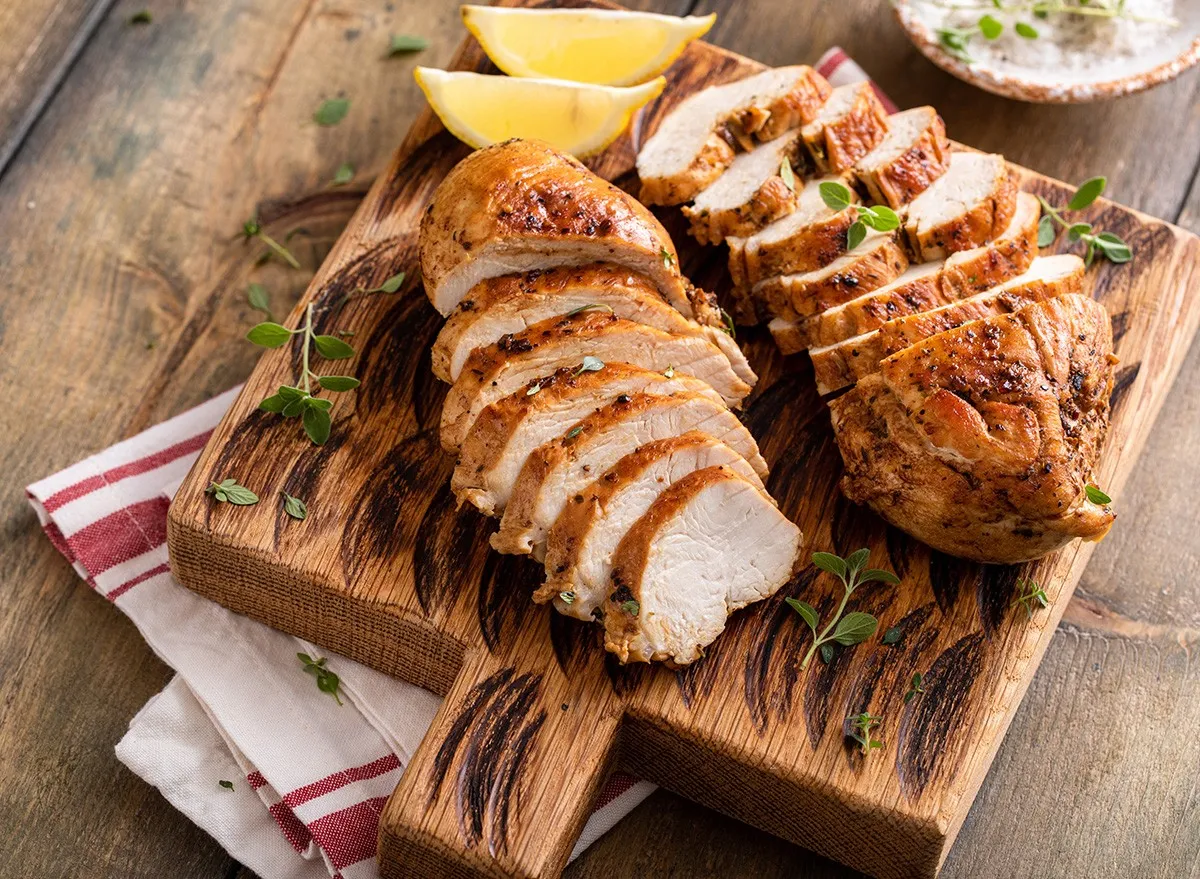
Everyday chicken earns its spot on this list as a practical protein source that supports natural GLP-1 function. Chef Zigga specifically lists chicken among recommended "lean meats" that support weight management, alongside bison and venison. The lean protein in chicken helps trigger satiety hormones naturally, helping you feel full longer after meals – similar to the effects of GLP-1 medications like Ozempic and Wegovy.
RELATED: What Happens to Your Body When You Stop Taking Ozempic
Versatile Shrimp
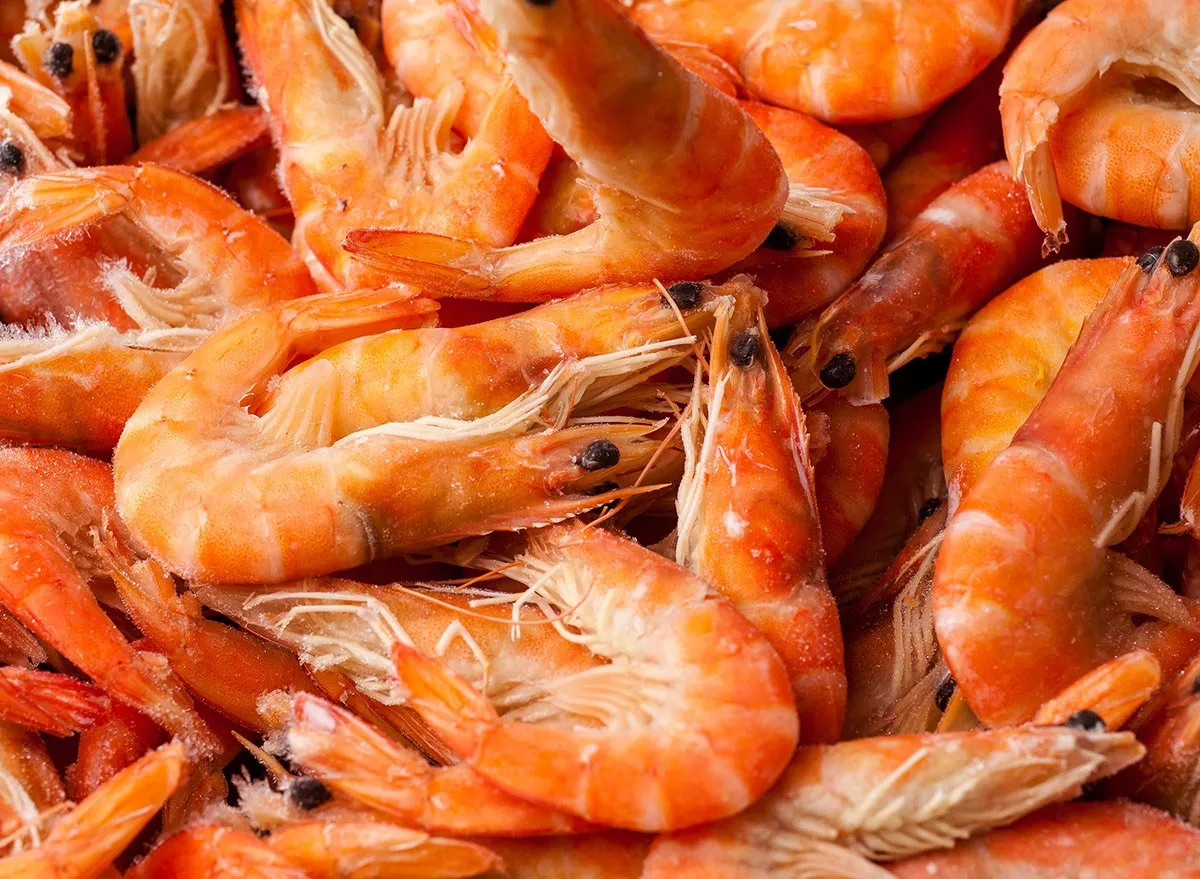
Seafood lovers rejoice – shrimp makes the list of Ozempic-mimicking foods. "If you're looking for something, even shrimp, honestly," Chef Zigga mentions when discussing lean protein options during the segment. This versatile seafood provides high-quality protein with minimal fat, helping to trigger those important satiety signals naturally. Shrimp cooks quickly and can be incorporated into countless dishes for an easy GLP-1-supporting meal.
Filling Oats
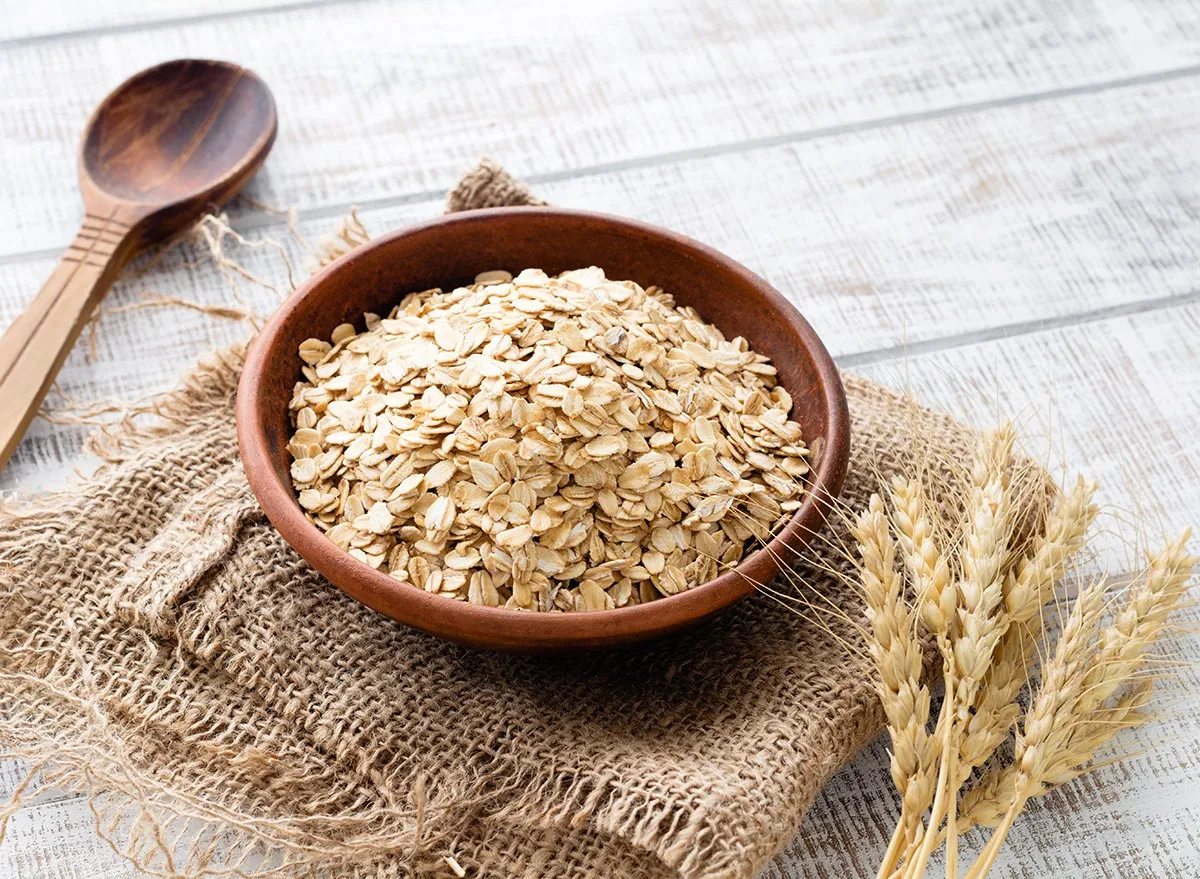
Start your day with oats to naturally support your body's GLP-1 system. "Oats are a fermented fiber. They help keep you fuller longer," Chef Zigga explains while demonstrating how to make overnight oats. This breakfast staple slows digestion and provides steady energy, helping you avoid hunger pangs between meals. Chef Zigga specifically highlighted overnight oats as an effective way to incorporate this GLP-1-supporting grain into your diet.
Protein-Packed Greek Yogurt
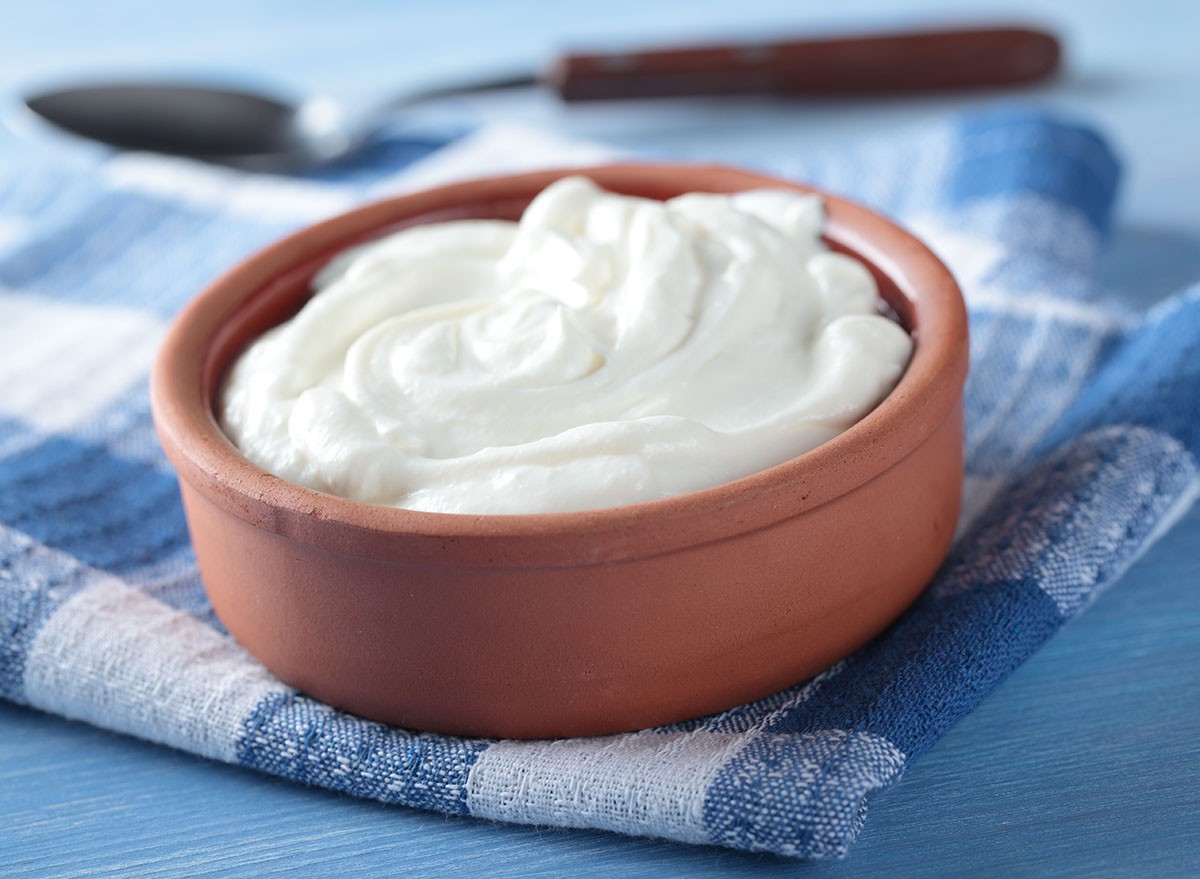
Greek yogurt earns its place on this list as a versatile, protein-rich food that supports satiety. Chef Zigga includes it as a key component in their overnight oats recipe, recommending "a half cup of Greek yogurt" as one of the "main components" in this GLP-1-supporting breakfast. The combination of protein and probiotics in Greek yogurt supports digestive health while helping to trigger satiety hormones naturally.
RELATED: 20 Things to Avoid While on Ozempic
Trilogy of Seeds: Flax, Hemp & Chia
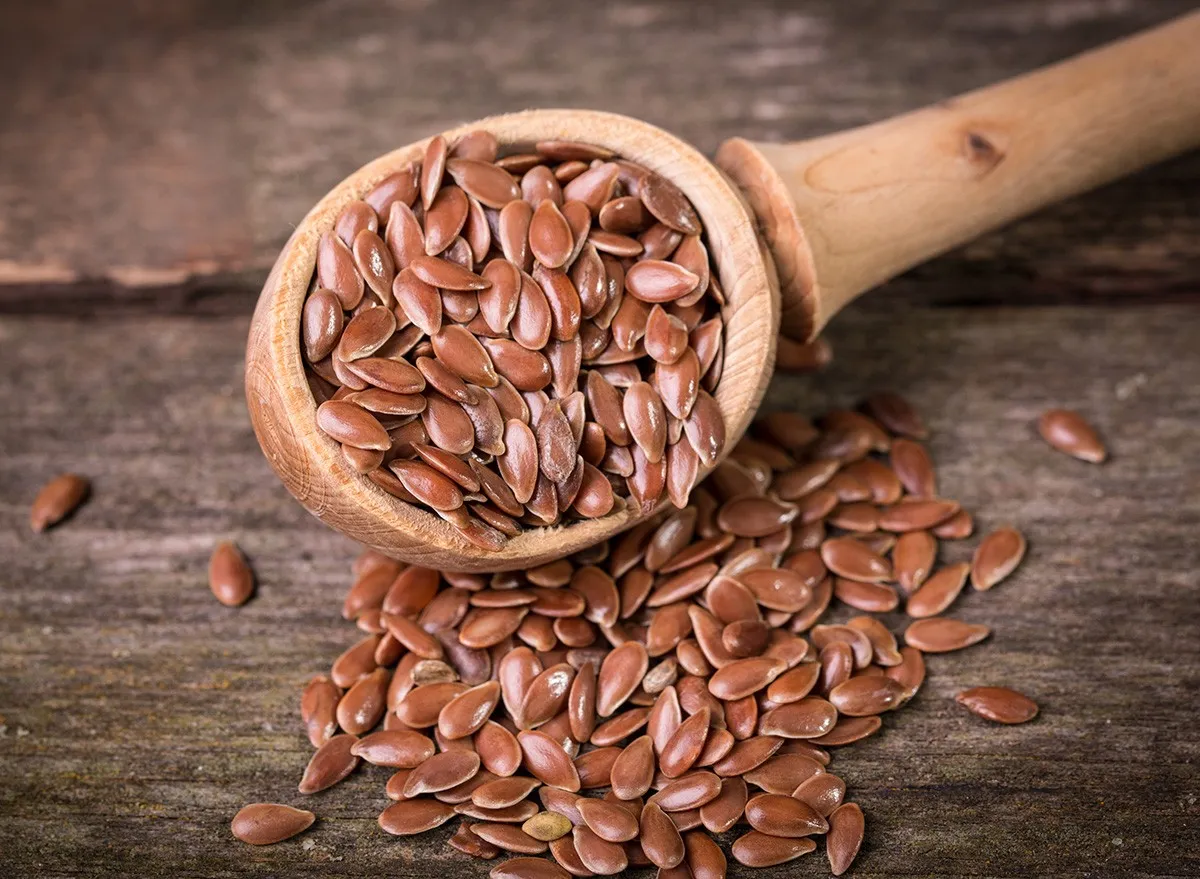
Small but mighty, this seed trio packs a powerful GLP-1-supporting punch. Chef Zigga showcases what they call "Trilogy" – a combination of flaxseeds, hemp, and chia seeds. "Flaxseeds for every tablespoon is 1.6 grams of omega fatty acids, but then it's very high in fiber. Hemp is for every tablespoon is a thousand milligrams of exactly a fiber also, and then as well as the chia seeds," they explain. These tiny powerhouses deliver concentrated doses of the same omega-3s and fiber that help GLP-1 medications work.
Tropical Papaya
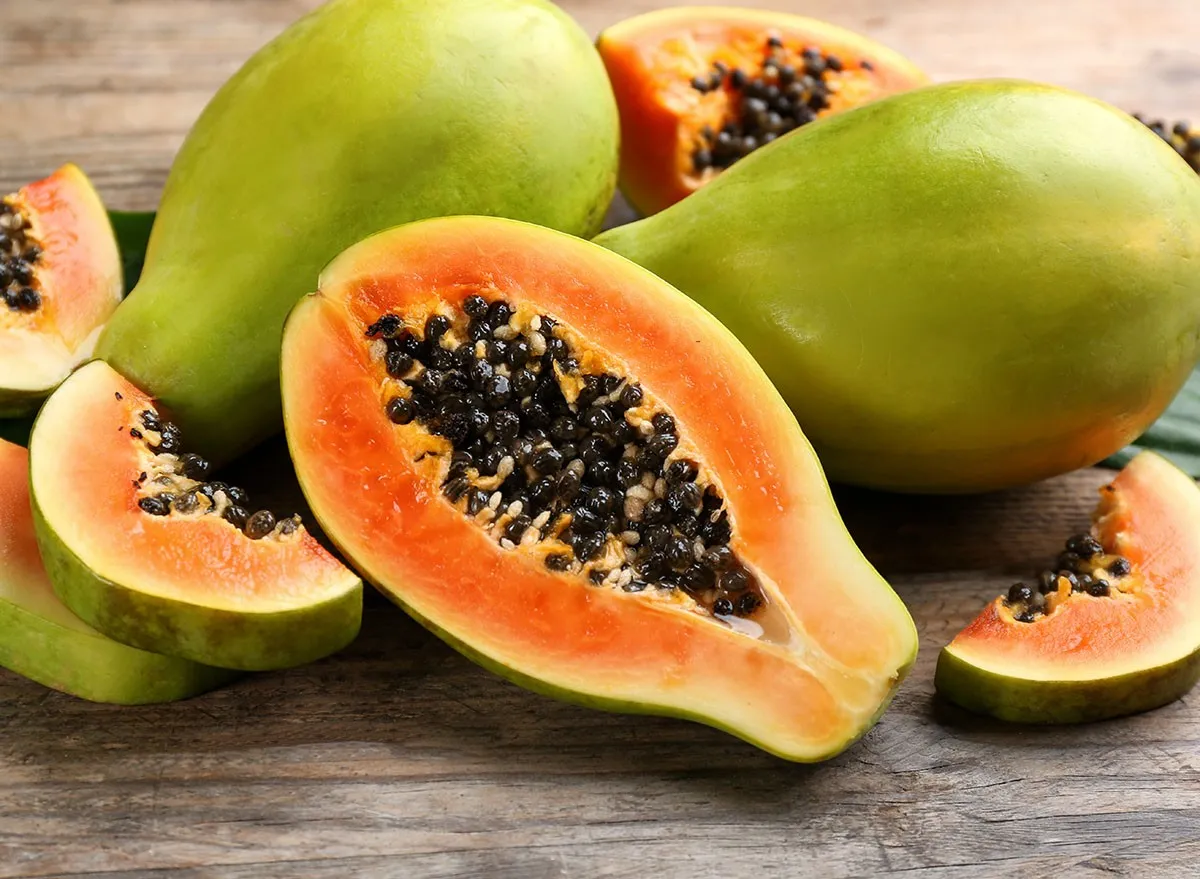
Complete your GLP-1-boosting diet with papaya, a fruit that directly supports hormone production. "Papaya also activates your GLP-1 secretions as well," Chef Zigga specifically notes during the segment. This tropical fruit not only adds natural sweetness to meals but contains enzymes that support digestion and help regulate appetite naturally. Chef Zigga demonstrates adding papaya to overnight oats, creating a breakfast that mimics the effects of weight loss medications.
RELATED: 5 Foods That Maximize Weight Loss on GLP-1 Medicines
These Foods Will "Help You Stay Fuller Longer"
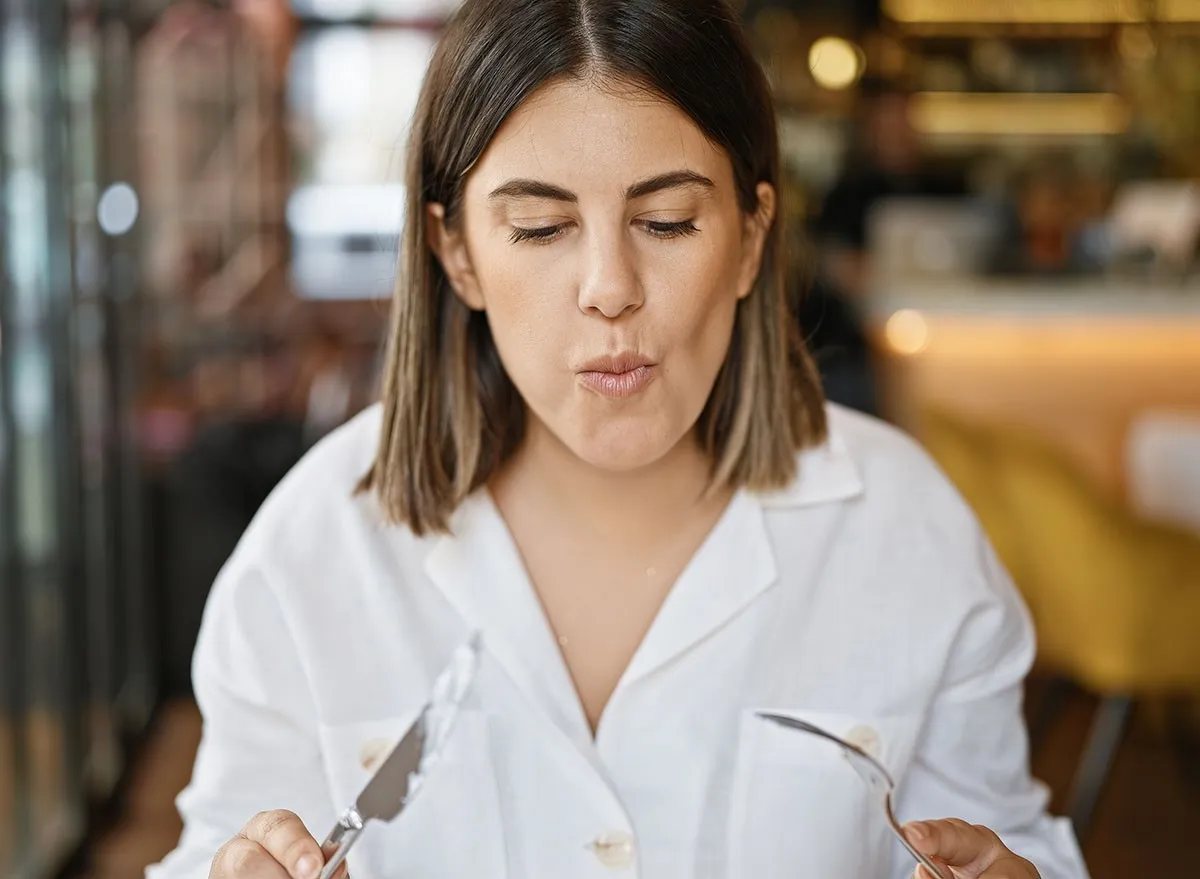
While medications like Wegovy and Ozempic have proven effective for weight management, Chef Zigga demonstrates that many everyday foods naturally contain or stimulate the same GLP-1 hormones that make these drugs work. As they explain, these foods "help you stay fuller longer" and "activate your GLP-1 secretions" – the same mechanisms behind prescription weight loss medications. By incorporating omega-3 rich fish, lean proteins, fiber-filled vegetables, and strategic seeds into your diet, you may be able to naturally boost your body's GLP-1 production. As always, consult with your healthcare provider before making significant changes to your diet or stopping any prescribed medications. And if you enjoyed this article, don't miss 20 Incredible Ozempic Success Stories of All Time.




